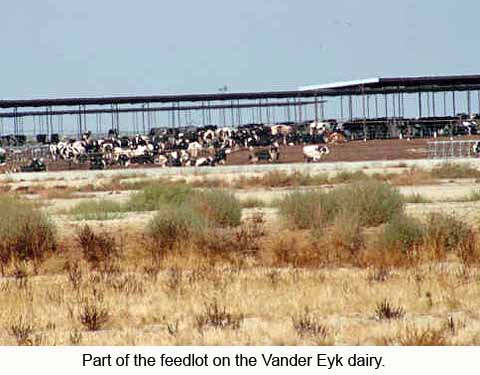By Samuel Fromartz
Hue Karreman, a prominent veterinarian who works with organic dairy farmers in Pennsylvania, has published a highly provocative essay on NewFarm.org arguing that organic livestock farmers should consider the use of antibiotics in rare instances – a practice currently banned by organic regulations.
"In essence, when it comes to an individual animal needing truly prompt, effective treatment for a serious infection on an organic farm, the US organic rule may compromise animal welfare," he writes.
His argument opens up a Pandora's box in organics, since the label for so long has been associated with "antibiotic and hormone-free" production methods. Surveys show those labels are a major reason organic milk is so popular with consumers. It is growing at about 20 percent a year.
While I don't expect the prohibition on antibiotics to change soon, Karreman makes an interesting argument – and one not particularly new. (He made the same point when I was working on my book and I include it in chapter 6.)
The main issue with antibiotics is their overuse, which allows bugs to build up resistance. This renders the drugs impotent in humans as well. But Karreman finds the one-time or rare use of the medicine distinctly different from the regular "sub-therapeutic" use of the drugs in livestock production, which is the main cause of rampant overuse.
One reason these therapies are so popular in conventional farming is that the animals suffer from diseases associated with confinement, or a poor diet. The low-forage diet in feedlot beef production, for example, increases the fat content in the muscle, but it also raises the chance of acidosis - or stomach acidity - which in turn is associated with disease. One way to reduce those diseases is to administer low levels of antibiotics, a common practice.
Ideally, organic animals avoid those pitfalls by grazing an adequate amount of time on fresh grass and avoiding the stress of a high-production regime. (Organic dairy cows, for example, produce less milk than conventional animals).
But what happens when an organic animal gets an infection? Currently, under organic production rules, the farmer is required to treat the animal with approved methods (that include herbal remedies, homeopathy, even acupuncture, all of which can be quite successful). But if the animal does not respond to approved therapies, the animal must be given antibiotics and then removed from the organic farm. They can never return.
Karreman believes this end-result puts farmers in a bind. The animal may suffer if the farmer waits to see whether it can heel without antibiotics, yet, if they administer the drug right away they must sell the animal. "Who is to say what medication will be used and when will it be started in the disease process?" He asks.
The issue this raises, of course, is whether organic milk will be able to maintain its distinct identity in the marketplace if antibiotics are allowed.
And like other parts of the organic regulations, would opening the door to rare use of antibiotics invite more extreme practices, such as the sub-therapeutic use that is so objectionable? If you consider the ways the rules have been bent on issues like grazing, that is not unlikely.
Karreman has been one of the few, if not the only one within the organic industry, to stick his head on this issue and make this proposal. At the very least, he faces an uphill battle.


